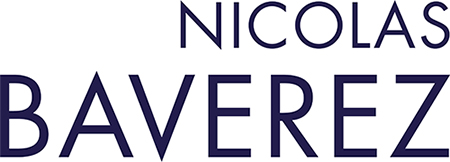Protectionism, isolationism, nationalism… The effects of the Republican candidate’s policy would be cataclysmic and lead to chaos.
After his clear victory on Super Tuesday, Donald Trump now has every chance of being the Republican candidate who will oppose Hillary Clinton in the 2016 presidential elections. His lightning and unexpected breakthrough can be explained as much by a duality in the economy and society as by a gap that has opened between Americans and their leaders.
On the economic front, the United States has two faces. On the one hand, the restoration of major factors of equilibrium has been spectacular: a stable annual growth rate of around 2.4%; the return to full employment with the creation of 2.7 million jobs in 2015, which has brought the unemployment rate down to 2.9% of the working population; salaries are increasing on average by 2.5% whilst inflation is no higher than 1% ; the national debt has been reduced from 10% to 2.4% of GDP since 2010. However, beneath this recovery lies the exclusion of several million demotivated workers, the explosion of inequality, the crisis of the middle classes which now comprise less than half the population, and the rise of poverty which affects one household in five.
But Trump’s success is primarily rooted in the political crisis. The anger, humiliation and fear of the majority of Americans have been underestimated. Anger at the loss of leadership and at institutional paralysis. The humiliation of the white middle class, expressed in a radical rejection of the first Afro-American president. Fear of the decline of the USA with regard to China, and the dissolution of Americans’ identity in the face of immigration.
Thanks to his image as a self-made man, Trump has managed to get part of the American nation behind him on the path to the presidency. But this has been done at the cost of pernicious rabble-rousing. His populism resides more in denunciation than in any coherent plan. By way of example, if his economic program were to be applied as is, it would lead the United States toward a new financial crash.
For Trump, the two wells to be exploited by the United States are lowering taxes and protectionism. He intends to cap corporation tax at 15% and income tax at 25%, whilst exonerating Americans who earn less than 25,000 dollars a year. Obamacare would be abolished in return for a significant decrease in the cost of drugs; retirement pensions and protection for the homeless would be improved. In the field of financial regulation, the – contraditory – aim consists in relaxing rules on banks’ operations whilst strictly regulating the activities of investment funds.
The main disruption is that of free trade. Trump proposes to introduce a tax of 20 to 40% on imports from China, Japan and Mexico, notably targeting goods produced abroad by American groups. Trade agreements between the Americas and the Pacific would be terminated and the huge transatlantic market abandoned. Finally, 11 million clandestine workers would be expelled and a wall built across the border with Mexico.
The potential consequences of this program are cataclysmic. The Treasury would lose 9,500 million dollars over ten years, which would raise the national debt from 2.4% to more than 4% and, by 2026, the debt would explode, reaching 120 to 180% of GDP. Protectionist measures would bring reprisals and trigger a trade and currency war that the G20 managed to avoid in 2009. Economically, the United States would be isolated and would lose its unique ability to attract talent, brains, companies and capital. Financially, the debt would become unsustainable, as it then would be largely underwritten by foreign investors, notably China. Geopolitically, the risk would be extremely high, since widespread disputes over trade and currency lead to armed conflicts between the major powers that structure globalization.
One of the strengths of the American political system lies in the fact that its door is open to people who are atypical. But Donald Trump is not Ronald Reagan. The latter, under cover of supply-side policies, had no hesitation in carrying out a decidedly Keynesian strategy. His economic and international policy managed to get America out of the nightmares of defeat in Vietnam and oil crises.
Trump, who is forever going against history, refuses globalization on the pretext that Barack Obama is its embodiment, which amounts to a denial of the 21st century. His isolationism and nationalism are the best ways of aggravating world chaos and the decine of the United States, whilst creating division among democracies confronted by strategic threats from the new autocrats and from jihadists. With the drying-up of the federal state’s resources and its increased indebtedness, a new financial crisis would be inevitable. Above all, massive recourse to protectionism would reboot the risk of world deflation, avoided in extremis in 2009.
Trump is making the same mistakes as were made by the United States in 1930 when the Smoot-Hawlay law instituted a massive increase in customs duties and triggered, by way of reprisal, a raft of protectionist measures and competitive devaluations that broke up international trade and payments. It may well be that he will moderate his position if he gains power. If he were to be elected, his powers would be regulated by the Constitution by means of the roles invested in Congress and the Supreme Court. But rabble-rousing is not a Google Car that can be steered at will. Donald Trump is not reviving America, he is reviving Depression.
(Column published in Le Point on March 10, 2016)
